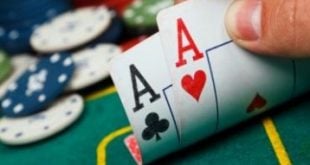Unless you are in a target retirement fund like Vanguard Target Retirement 2035 (maturity matching your target retirement date), you need to undertake a periodic review of your IRA (Traditional and Roth) and 401K investments. The New Year is a good time to review. While my IRA account will never rival Mitt Romney’s, I expect my legacy IRA (1/3 Roth, 2/3 Traditional) to throw off a good portion of my retirement income (2-3 times my cost of living adjusted Social Security) in just over 20 years time.
Q1 2016 @Firehorsecaper IRA portfolio & weighting: HEDJ (WisdomTree Europe Hedged Equity ETF) 17%, DXJ (WisdomTree Japan Hedged Equity ETF) 16%, HDV (iShares High Dividend ETF, 3.8% yield) 16%, QQEW (NASDAQ 100 equal weighted ETF) 5%, PFF (iShares U.S. Preferred Shares ETF, 5.9% yield) 16%, BBN (Blackrock Taxable Municipal Bond Fund, closed end fund, 7.9% yield) 16%, DSL (DoubleLine Income Solutions Fund closed end fund, 10% yield) 9%, SLRC (Solar Capital Ltd., a high yielding BDC, 9% yield) 5%. Overall asset allocation 54% equity / 46% “alternative” fixed income.
ETF’s have taken off in popularity over the last few years and fees are typically much lower than comparable mutual funds. Many expect long-only mutual funds to go the way of the Dodo bird, over time. “Smart-beta” has been the a fast growing ETF sector and now stands at $400bln with traditional index ETFs at $1.8tln. Smart beta ETFs have attracted $65bln in assets in 2015 with a whopping $18bln (28%) allocated to Wisdom Tree’s DXJ (currency hedge Japan) and HEDJ (currency hedged Europe).
The largest ETF in the “Traditional”category is State Street’s SPY with $183bln in AUM. Perhaps more surprising than its size is the average hold period of less than a week. VOO is Vanguard’s S&P ETF offering and at $40bln it is growing for 2 reasons, i) Cost, 5bp vs 9bp for SPY and ii) Structure, SPY is a UIT (Unit Investment Trust) meaning units can not be re-hypothecated, whereas VOO is an ETF. Securities lending fees are passed through to the ETF holder and VOO is more capital efficient for institutional accounts as they can rely on cross-product netting for margining purposes with their PB (Prime Broker).
ETFs are increasingly being used by institutional accounts for asset allocation purposes. Good Harbor Financial LLC is one of the biggest ETF portfolio managers in the US which in 2014 moved to semi-monthly re-balancing from monthly to mask their often multi-billion dollar re-allocations between equity and fixed income ETFs (5-10bln across half a dozen ETFs).
The analytics for the DIY ETF investor have never been better in terms of diversity or cost. The one consistent criticism of DIY is that the steady hand at the wheel often heads for a puke over the side when the waves measure a multiple of your boat. For those willing to monitor more actively, there are sites like etfreplay.com (warning: more addictive than Minecraft for adults) which allows you to build, back-test and manage your own ETF driven investment portfolio. Monthly re-balancing ideally, but if you are in the best 4 of 12 ETFs you will rarely be trading more than 1-2 ETFs per month. Moving average filters (200 day moving average, or others of your choosing) direct you to ETF products like SHY (1-3 year Treasury ETF) when all hell breaks loose. There is also etfdb.com which has both a free and paid version for research purposes. Note: Not personally affiliated with either, just a happy subscriber, as I am to IBC’s Exodus service.
Speculative trading is fun and can be lucrative, but most are not wired to handle the inevitable drawdowns inherent in the trading strategy for all your chips. Prudent asset allocation and the power of compounding are important drivers for your very long term investment goals. It is the hamburger versus steak trade, or for the vegans the iceberg lettuce versus arugula trade. JCG
Note: Citizen of the world asset allocation. A US based investor would typically exhibit more home country bias and have the equity component more USA weighted. The “go to” funds in the Vanguard family would include VTI (Total US Market ETF), VNQ (US REIT Index) and VYM (High Dividend Yield ETF) with upwards of 1/3 of overall portfolio weighting in VTI as a core holding.
If you enjoy the content at iBankCoin, please follow us on Twitter





excellent post
In an environment of debt obliteration – such as we are now entering – the only “safe” bet is US treasuries. To be balanced, some equity allocation must be maintained in the very unlikely event that hyper-inflation becomes reality in the US. Gold might see a fear-based pop, but will suffer later as cash is needed to settle bad debts.
Firehorsecaper, are the hedged etf’s mentioned because of Central Bank activity, or regardless of CB’s? They are outperforming their counterparts now, but does that change if policy changes, or is it a moot point precisely because of the hedge?
Velth, The hedged Japan and Europe equity is largely because of their ongoing QE. The rules on hedging foreign equity exposure is more art than science in some ways. For foreign bond exposure the research is clear, hedge 100% back to your “home” currency as the vol of the fx exposure swamps the return of the underlying asset class (bonds). Some advise the “no regret” hedge ratio for foreign equity exposure is 50%, but in the case of EUR and JPY I think 100% is appropriate for the next 12-18 months given divergent monetary policy. Short term retracements aside it is the right risk adjusted trade. JCG
Firehorsecaper, do you reinvest your dividends or take the cash dividend, or does it depend on the holding? Thanks for all the help!
Dividends. It depends in my case. I take my dividends on most ADRs and LSE listed ETFs (no withholding tax and not taxable in Singapore). Others I re-invest or buy ETFs that accumulate dividends rather than distribute them (withholding tax driven). JCG
I will have to “pay the piper” eventually, but assume I will be taking distributions from a country with a dual taxation treaty with the US hence the withholding tax will most likely be 15%, instead of 30% with no treaty.
Thank you for the response and insight JCG, much appreciated!